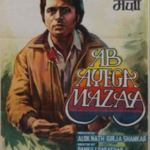Movie Case Study
Watch this scene carefully from the movie “About Time”. This movie revolved around time travel. This scene shows how when Tim’s (played by Domhnall Gleeson) father is dying, he visits him. Since they both are ‘time travelers’ they decide to go back again into the past to re-live their ‘walk on the beach.
What is the time value of money?
Generally, most of the population can’t time travel therefore we live in the present and create goals for the future so that our lives will be happier and more prosperous. We continuously work toward these goals and ideals in the hope of a better tomorrow. We try to add value today to create a future with added value and benefits. Hence, in the ‘Present time,’ we create ‘future value‘.
The time value of money is based on a similar concept. The value of money today would be different from tomorrow’s value or the value after 5 years i.e. 100 rupees today will be more in 1 year’s time. If I deposit 100 rupees in the bank, I get an interest of 10% so the value of 100 rupees becomes 110 after 1 year. This is generally due to interest. Rs. 100 is called the present value while Rs.110 is referred to as the future value.
The time value of money is a basic concept in solving many business decisions, valuations of assets, investment decisions, etc. Through the concept of the time value of money, simple interest and compound interest can be calculated.
The formula for calculating future value is given below:
FV=PV (1+r)^n
Where:
- FV= Future Value
- PV= Present Value
- r= rate of interest
- n= no. of years
Interest is given to you when you deposit and interest is taken from you when you borrow or take a loan. Hence, Interest is the cost of borrowing. Simple interest is what you earn on the initial investment only while compound interest is the interest you earn on the initial investment and on previous interest.
Understand the time value of money with a Video:
References: Financial Accounting, Spiceland









[…] Interest is the cost of borrowing of money. Similar to the scene we saw, Paroo had Davdas’s 3 rupees on which he was asking for interest. In real life scenario, if you borrow Rs. 1,00,000 today and pay back Rs. 1,10,000 after 1 year. Interest expense will be 10%. It is this interest that gives money its time value. […]